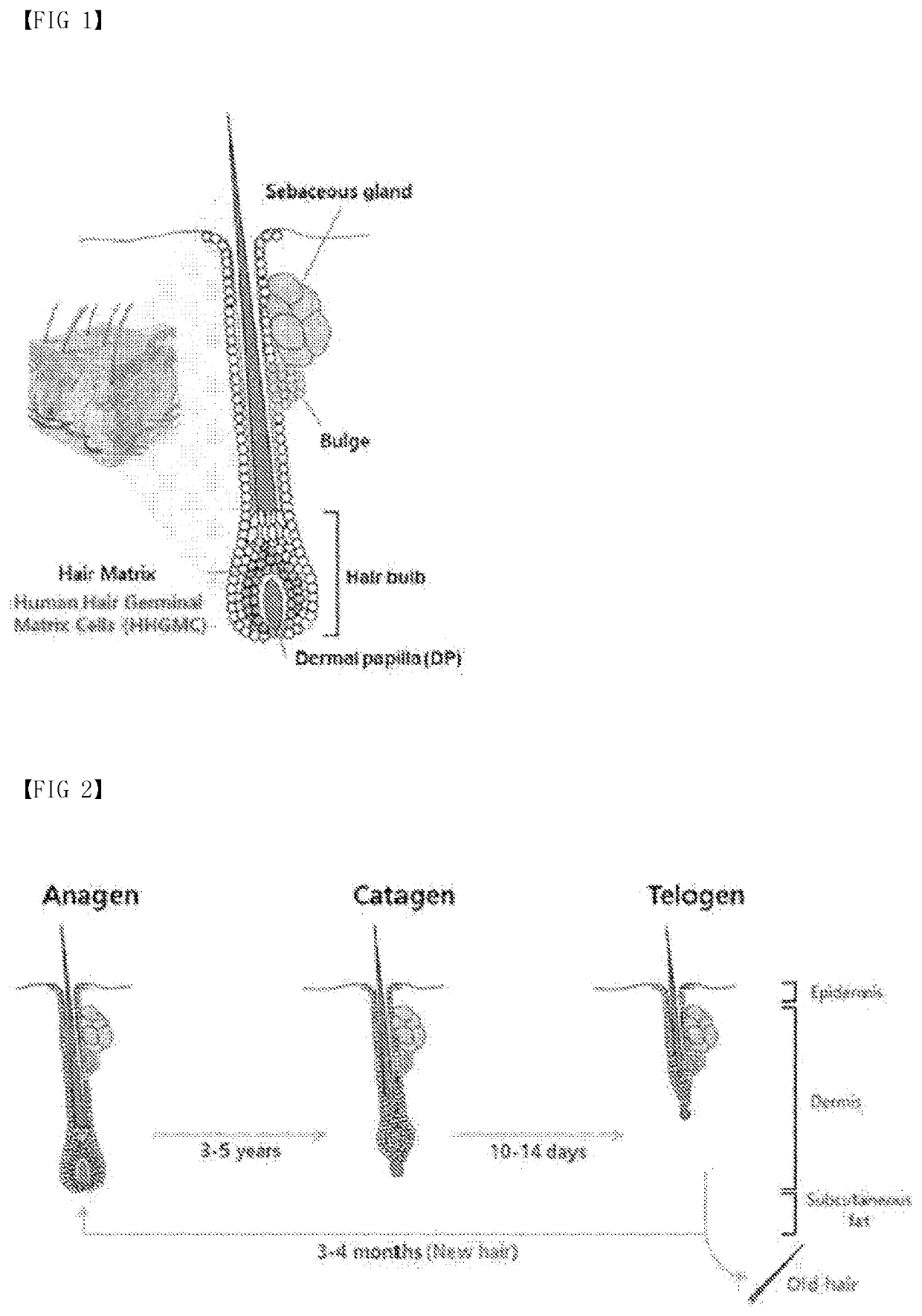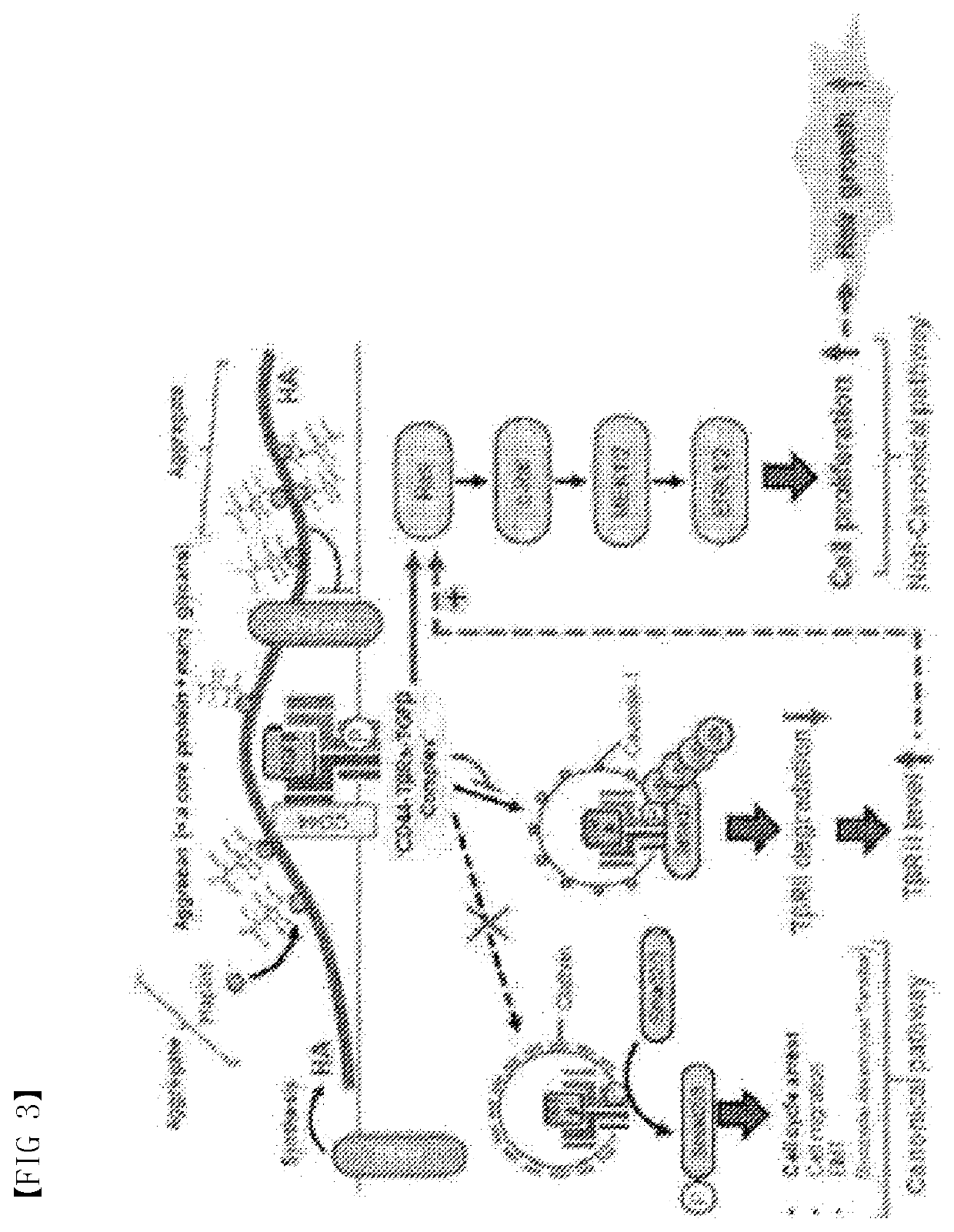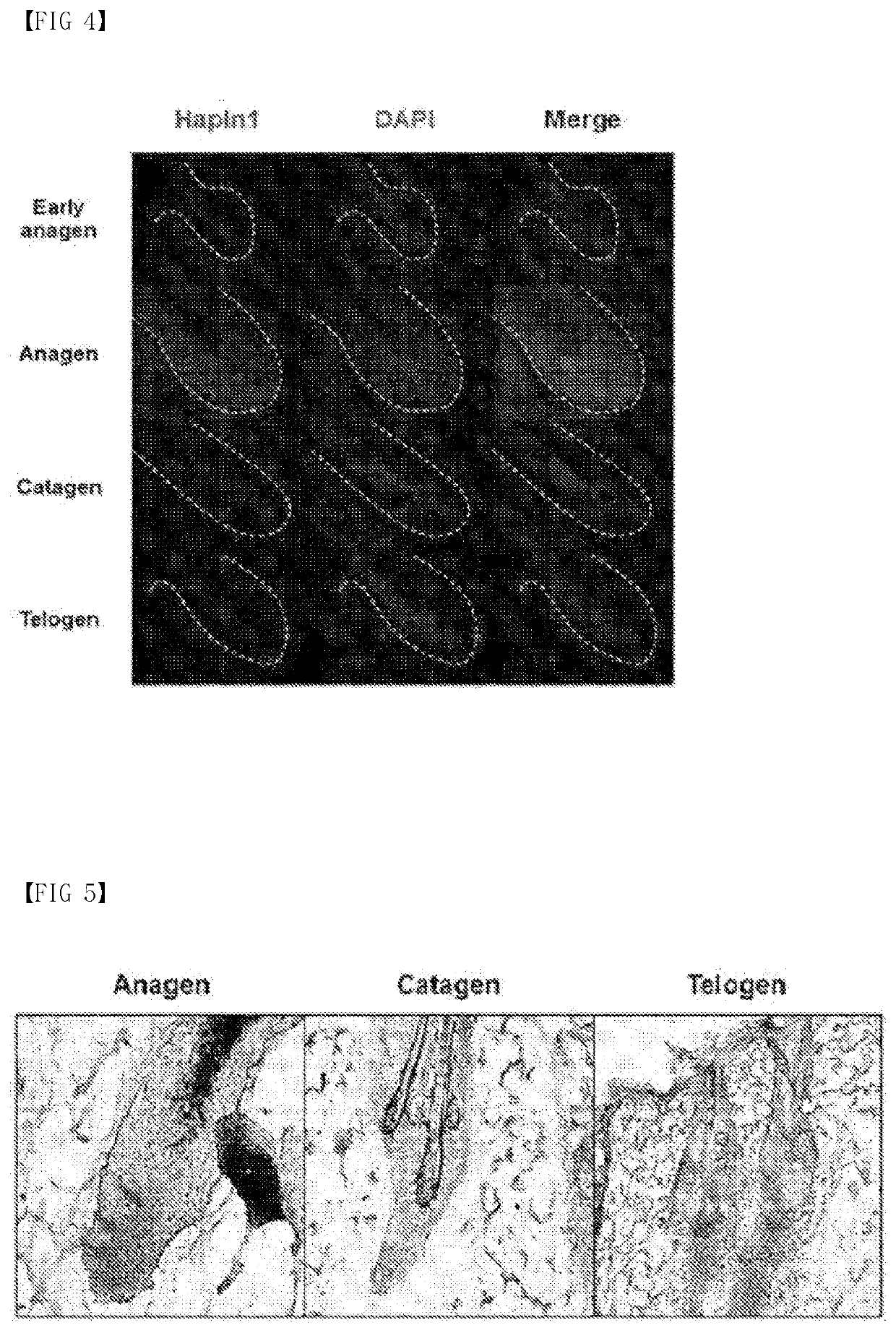Composition for prevention or treatment of hair loss including hapln1
a technology of hapln1 and hapln2, which is applied in the direction of hair cosmetics, drug compositions, peptide/protein ingredients, etc., can solve the problems of hair falling out, hair falling out, and hair loss in female patterns
- Summary
- Abstract
- Description
- Claims
- Application Information
AI Technical Summary
Benefits of technology
Problems solved by technology
Method used
Image
Examples
example 1
[0055]Confirmation of HAPLN1 Protein and HAPLN1 mRNA Expression in each Hair Growth Cycle
[0056]In this example, the expression of HAPLN1 protein was confirmed in each hair growth cycle using mouse skin.
[0057]The mouse skin was collected at 23 days old (early anagen), 32 days old (anagen), 40 days old (catagen), and 44 days old (telogen), and was fresh frozen. The skin tissue section was fabricated to have a thickness of 8 μm, and the presence or absence of the HAPLN1 protein was detected using a HAPLN1 antibody (Abcam, USA). Immunofluorescence was carried out according to a common experimental method.
[0058]As a result, as shown in FIG. 4, it was confirmed that HAPLN1 was significantly expressed in the hair germinal matrix cells in the anagen phase, and it was also confirmed that the HAPLN1 expression level was reduced in the catagen and telogen phases.
[0059]Subsequently, HAPLN1 mRNA was identified in the mouse skin to determine in which cells HAPLN1 was produced.
[0060]The mouse skin...
example 2
[0062]Confirmation of Increase in TβRII Protein in Human Hair Germinal Matrix Cells by HAPLN1
[0063]In this example, it was confirmed whether HAPLN1 increased the amount by preventing the degradation of TβRII.
[0064]HAPLN1 was treated on human hair germinal matrix cells by concentration. Specifically, human hair germinal matrix cells (HHGMC) were dispensed into a poly-D-lysine 6-well plate at 5.0×104 per well and cultured for 24 hours. After 24 hours, the medium was removed and replaced with a new serum-free medium. HAPLN1 was treated with 0, 5, 10, 20 ng / mL and incubated for 24 hours. After collecting cells, a lysis buffer (25 mM Tris-HCl, 1 mM EDTA, 0.1% Triton-X100, phosphatase inhibitor, and protease inhibitor) was added, and all the cells were broken through sonication. TβRII in the sample was measured using Western blotting. The optical density of TβRII was compared to that of GAPDH using a densitometer (that is, TβRII optical concentration GAPDH optical concentration). Here, GA...
example 3
[0067]Confirmation of Increase in TβRII Protein in Human Hair Germinal Matrix Cells by HAPLN1 and / or HA
[0068]It was assumed that HAPLN1 affects TβRII by stabilizing HA rather than acting directly on TβRII in the TGF-β signaling pathway. To confirm this, an experiment for treating HAPLN1 and HA together was performed.
[0069]Human hair germinal matrix cells were dispensed into a poly-D-lysine 6-well plate at a concentration of 5.0×104 per well and cultured for 24 hours. After 24 hours, the medium was removed and replaced with a new serum-free medium. HAPLN1 was treated with 25 ng / mL, HA was treated with 25 μg / mL, and after 1 hour, TGF-β2 (2 ng / mL) was treated. After 23 hours, cells were collected, a lysis buffer (25 mM Tris-HCl, 1 mM EDTA, 0.1% Triton-X100, phosphatase inhibitor, and protease inhibitor) was added, and all the cells were broken through sonication. TβRI and TβRII in the sample were measured using Western blotting. The optical density of TβRII was compared to that of GAPD...
PUM
 Login to View More
Login to View More Abstract
Description
Claims
Application Information
 Login to View More
Login to View More - R&D
- Intellectual Property
- Life Sciences
- Materials
- Tech Scout
- Unparalleled Data Quality
- Higher Quality Content
- 60% Fewer Hallucinations
Browse by: Latest US Patents, China's latest patents, Technical Efficacy Thesaurus, Application Domain, Technology Topic, Popular Technical Reports.
© 2025 PatSnap. All rights reserved.Legal|Privacy policy|Modern Slavery Act Transparency Statement|Sitemap|About US| Contact US: help@patsnap.com



